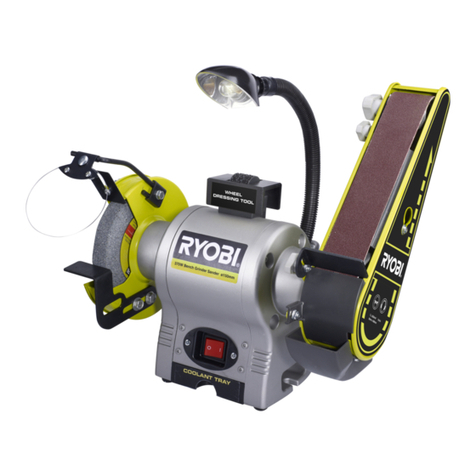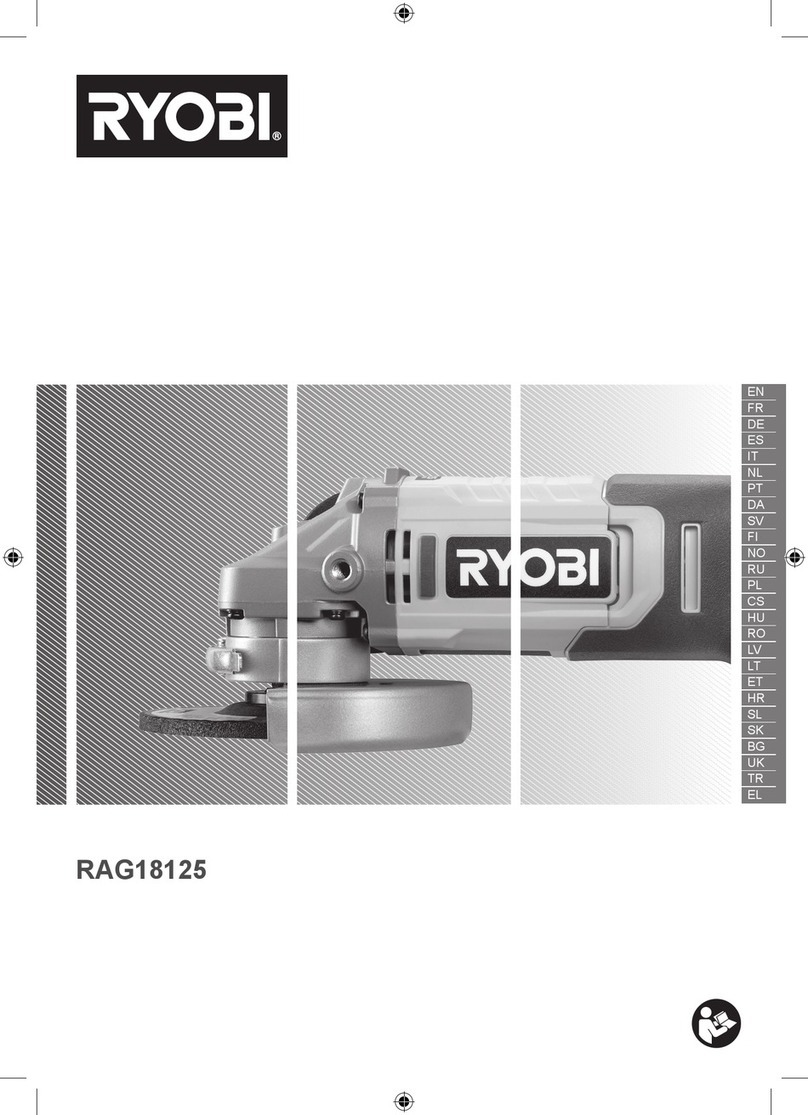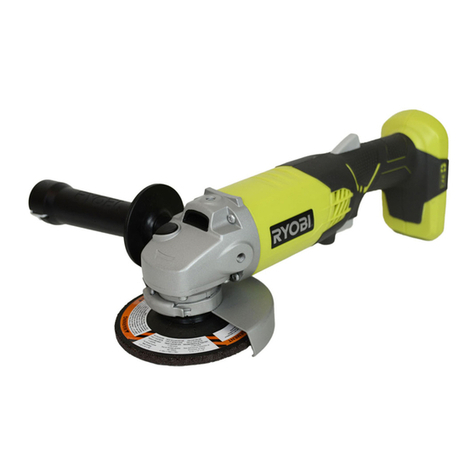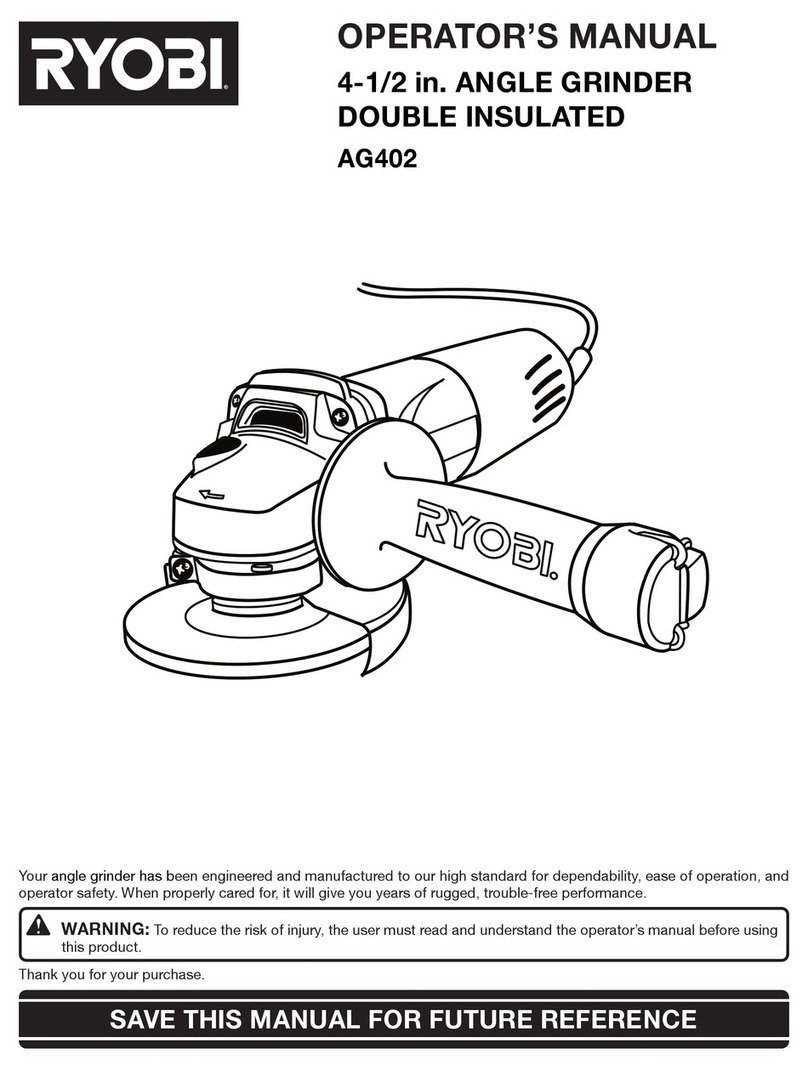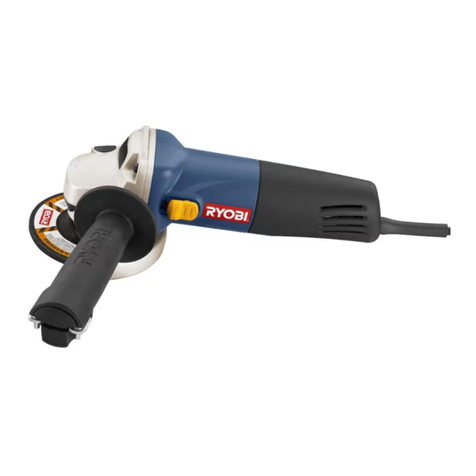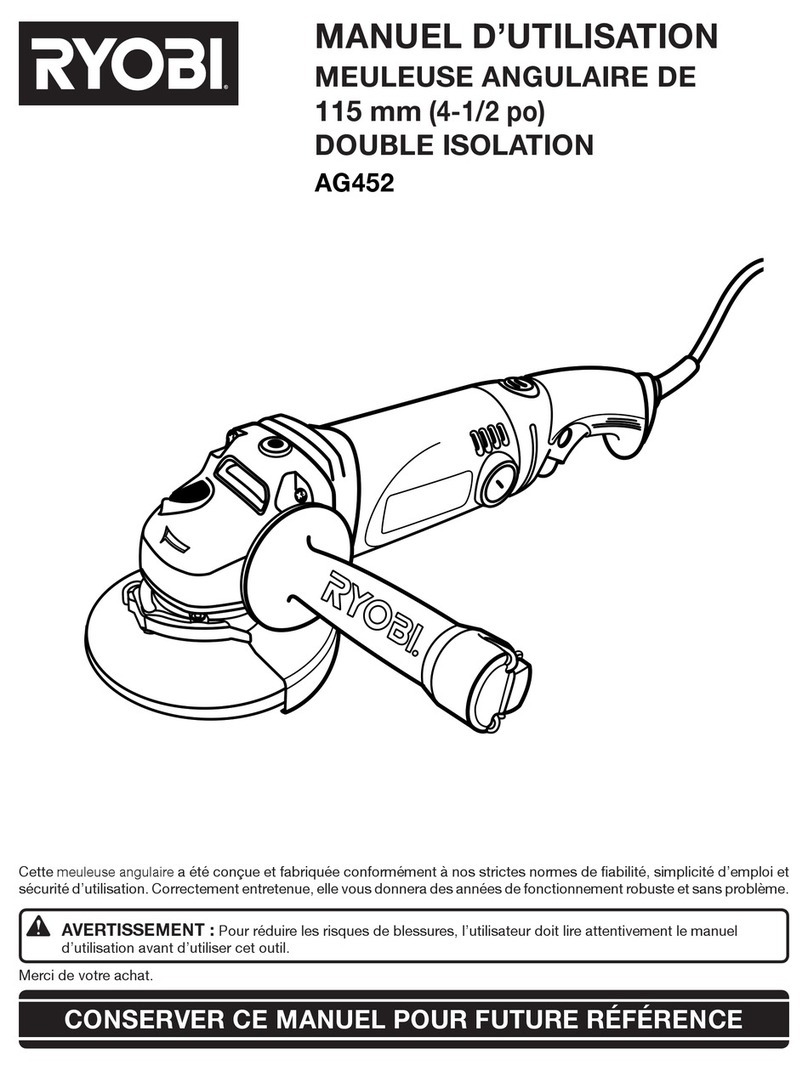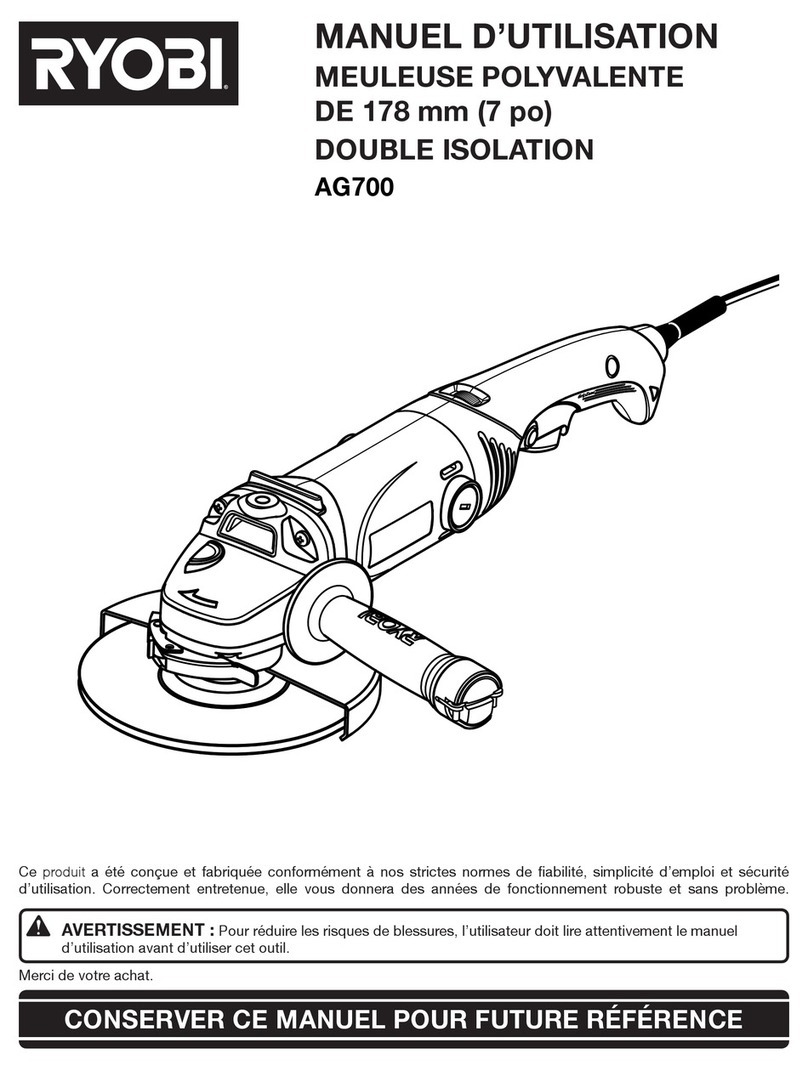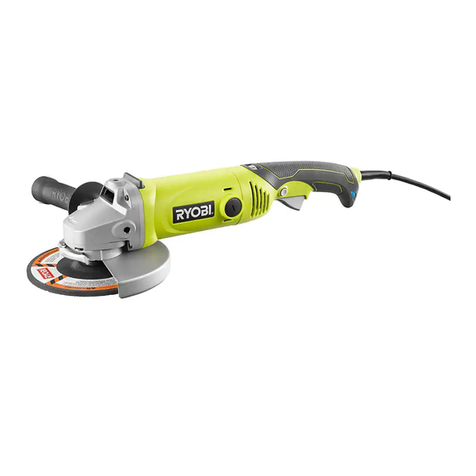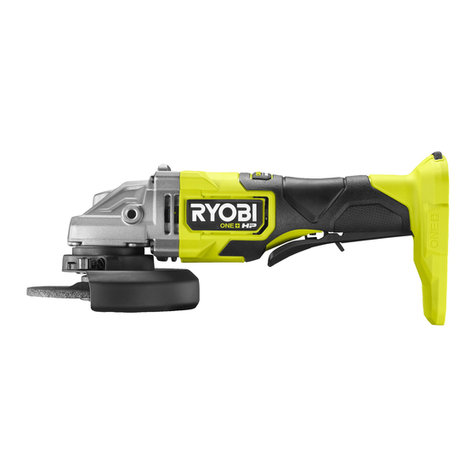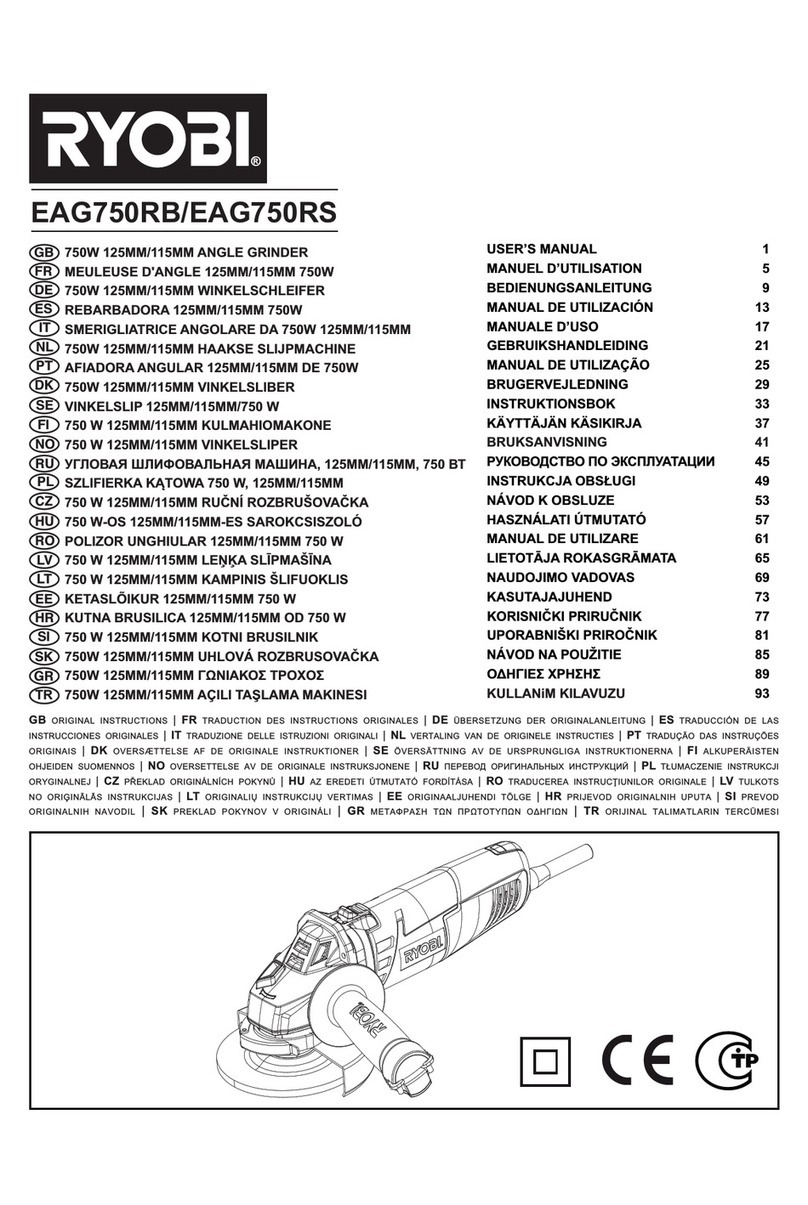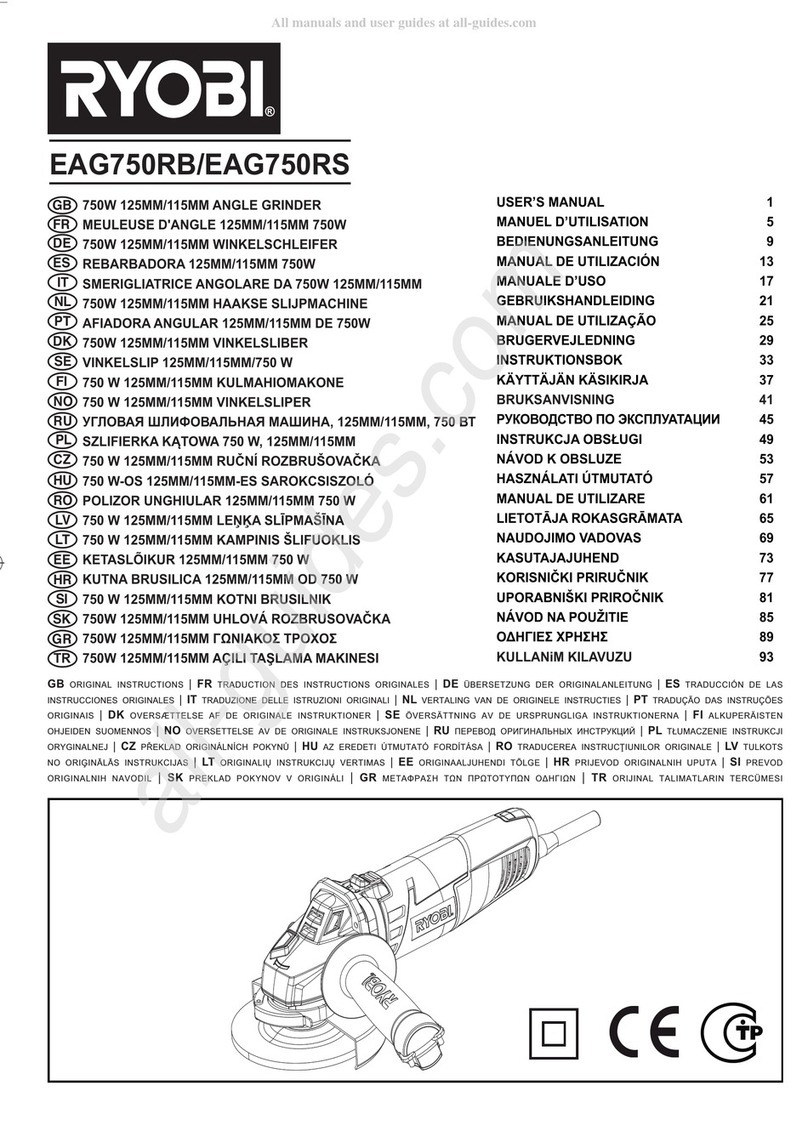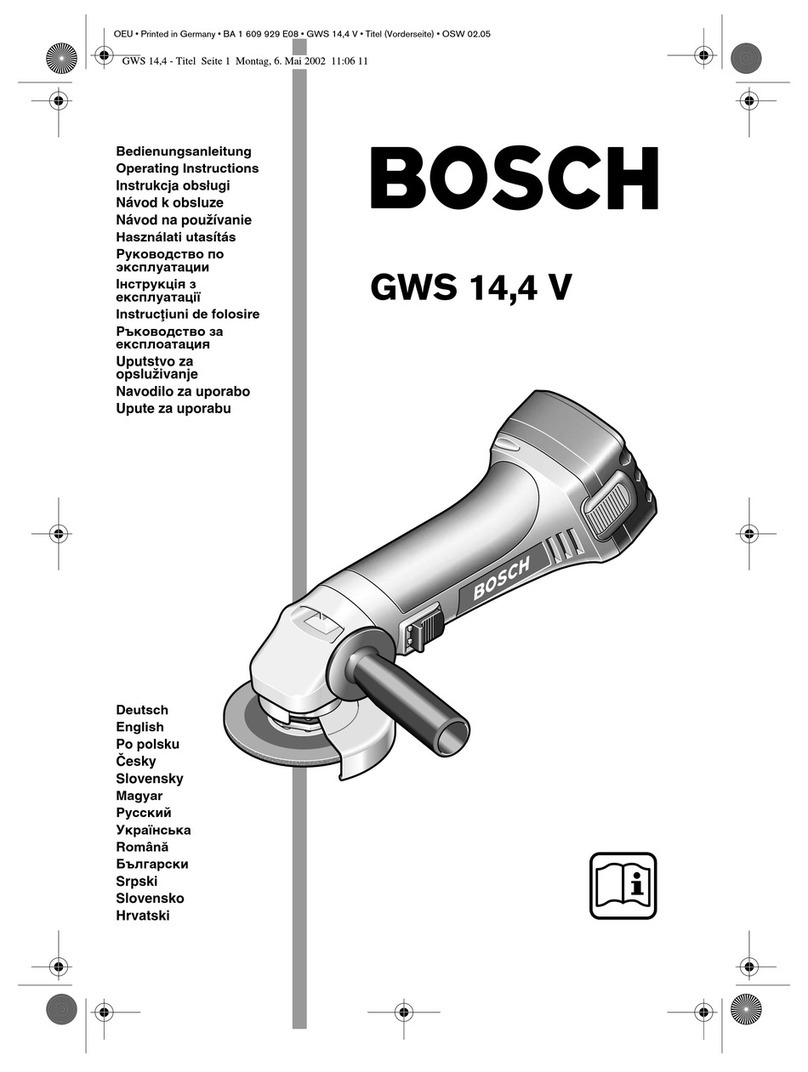
2
■Avoid direct contact with the inserted tool during and
after use as it can be hot or sharp.
■The maximum operating speed of the inserted tool
shall equal or exceed the rated speed marked on the
tool.
■Never mount a grinding wheel, cut-off wheel or router
cutter on a die grinder. A grinding wheel that bursts
can cause very serious injury or death.
■Do not use mounted wheels which are chipped or
cracked or which could have been dropped.
■Use only permitted inserted tools of the correct shaft
diameter.
■Pay attention to the fact that the permitted speed
of the mounted point has to be lowered due to the
increase of the length of the shaft between the end
of the collet and the mounted point (overhang). Make
sure that the minimum gripping length of 10 mm is
observed (see Figure 1 and the recommendations of
the manufacturer of mounted points).
■Be aware of the risk of mismatching the diameter of
the shaft of the mounted point and that of the collet.
WORKPLACE HAZARDS
■Slips, trips and falls are major causes of workplace
injury. Be aware of slippery surfaces caused by use of
the tool and also of trip hazards caused by the air line
or hydraulic hose.
■Proceed with care in unfamiliar surroundings. There
can be hidden hazards, such as electricity or other
utility lines.
■The die grinder is not intended for use in potentially
explosive atmospheres and is not insulated against
contact with electric power.
■Ensure that there are no electrical cables, gas pipes,
etc., which can cause a hazard if damaged by use of
the tool.
DUST AND FUME HAZARDS
■Dust and fumes generated when using die grinders
can cause ill health (for example cancer, birth
defects, asthma and/or dermatitis); risk assessment
and implementation of appropriate controls for these
hazards are essential.
■Risk assessment should include dust created by the
use of the tool and the potential for disturbing existing
dust.
■Operate and maintain the die grinder as recommended
in these instructions, to minimize dust or fume
emissions.
■Direct the exhaust so as to minimize disturbance of
dust in a dust-filled environment.
■Where dust or fumes are created, the priority shall be
to control them at the point of emission.
■All integral features or accessories for the collection,
extraction or suppression of airborne dust or fumes
should be correctly used and maintained in accordance
with the manufacturer's instructions.
■Select, maintain and replace the consumable/inserted
tool as recommended in the instructions, to prevent an
unnecessary increase in dust or fumes.
■Use respiratory protection in accordance with
the employer's instructions and as required by
occupational health and safety regulations.
■Working in certain materials creates emission of
dust and fumes, causing a potentially explosive
environment.
NOISE HAZARDS
■Exposure to high noise levels can cause permanent,
disabling hearing loss and other problems, such as
tinnitus (ringing, buzzing, whistling or humming in the
ears). Therefore, risk assessment and implementation
of appropriate controls for these hazards are essential.
■Appropriate controls to reduce the risk may include
actions such as damping materials to prevent work
pieces from “ringing”.
■Use hearing protection in accordance with employer's
instructions and as required by occupational health
and safety regulations.
■Operate and maintain the die grinder as recommended
in the instruction handbook, to prevent an unnecessary
increase in the noise level.
■Select, maintain and replace the consumable/inserted
tool as recommended in the instruction handbook, to
prevent an unnecessary increase in noise.
■If the die grinder has a silencer, always ensure that
it is in place and in good working order when the die
grinder is being operated.
VIBRATION HAZARDS
The information for use shall draw attention to vibration
hazards that have not been eliminated by design and
construction and remain as residual vibration risks. It shall
enable employers to identify the circumstances in which
the operator is likely to be at risk from vibration exposure.
If the vibration-emission value obtained using ISO 28927-
12 does not adequately represent the vibration emission
in the intended uses (and foreseeable misuses) of the
machine, additional information and/or warnings shall be
supplied to enable the risks arising from vibration to be
assessed and managed.
■Exposure to vibration can cause disabling damage to
the nerves and blood supply of the hands and arms.
■Wear warm clothing when working in cold conditions
and keep your hands warm and dry.
■If you experience numbness, tingling, pain or whitening
of the skin in your fingers or hands, stop using the die
grinder, tell your employer and consult a physician.
■Operate and maintain the die grinder as recommended
in the instruction handbook, to prevent an unnecessary
